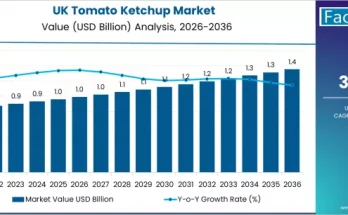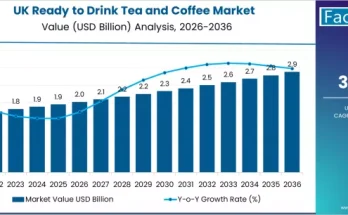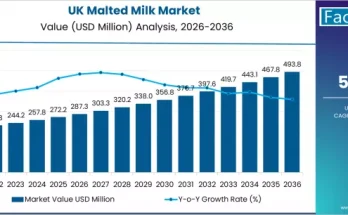The global Oriental sauce market is experiencing a robust expansion, underpinned by evolving consumer tastes and widening culinary borders. The market value is estimated at approximately US$ 12.7 billion in 2022, with projections suggesting it will reach US$ 22 billion by the end of 2032, reflecting a compound annual growth rate (CAGR) of around 5.6%. This growth trajectory is driven by the rising global fascination with Asian cuisines, growing penetration of international retail and e-commerce channels, rapid product innovation, and the versatile applications of oriental sauces in both household and commercial kitchens.
A Culinary Shift: Drivers Powering Demand
Several trends are propelling the Oriental sauce market forward. The foremost factor is the worldwide popularity of Asian cuisine. From soy and teriyaki to hoisin, oyster, chili, and black bean sauces, global consumers are embracing authentic Asian flavors like never before. Millennials and Generation X, in particular, are drawn to bold and diverse taste experiences, prompting restaurants and households alike to experiment with new flavors.
In addition, expanding distribution channels have made oriental sauces more accessible. Supermarkets, hypermarkets, specialty Asian stores, and online retail platforms are bringing these sauces to consumers around the globe. The rise of e-commerce has been especially influential, enabling niche and premium sauce brands to reach international markets efficiently.
Product innovation has also become a key driver. Manufacturers are introducing healthier alternatives such as low-sodium, gluten-free, and organic sauces. Packaging improvements — including resealable pouches, easy-pour bottles, and single-serve sachets — are enhancing convenience and extending shelf life. Moreover, the growing use of oriental sauces in food-service applications, including ready meals, marinades, and dressings, underscores their adaptability in the global food ecosystem.
Market Segmentation: Product Types and Applications
The Oriental sauce market is segmented based on product type, form, distribution channel, and end use.
Product Type:
Soy sauce remains the leading product category, given its versatility and long-standing global acceptance. Other variants, such as teriyaki, hoisin, oyster, chili, and plum sauces, are also gaining popularity as consumers seek diversity and authenticity in their cooking.
Form and Application:
Liquid sauces account for the largest share, owing to their ease of use in cooking and marination. However, semi-solid and cream-style sauces are carving out a niche, particularly in premium and fusion cuisines.
Distribution Channels:
Offline retail outlets, including supermarkets and hypermarkets, continue to dominate sales. Yet, online retail is rapidly catching up, especially in urban markets where convenience and product variety are major consumer priorities.
End Use:
While household consumption remains dominant, the food-service industry is emerging as a key growth engine. Restaurants, fast-food chains, and packaged food manufacturers increasingly rely on oriental sauces to meet rising consumer demand for Asian-inspired dishes.
Regional Insights: Asia-Pacific, North America, and Europe
Asia-Pacific holds the largest share of the global Oriental sauce market, accounting for nearly 40% of total revenue. This dominance is attributed to the region’s culinary heritage, strong domestic consumption, and the expansion of Asian food exports. Countries such as China, Japan, South Korea, India, and those in Southeast Asia are leading producers and consumers of these sauces.
North America follows closely, driven by the cultural diversity of its population and the surging popularity of Asian cuisine in both retail and restaurant segments. Consumers in the United States and Canada are showing an increasing preference for authentic Asian condiments, boosting imports and local production alike.
Europe also represents a significant market, characterized by growing consumer interest in exotic cuisines and health-focused products. European consumers are particularly responsive to premium and organic oriental sauces that align with clean-label and sustainable food trends.
Key Players and Competitive Insights
Prominent players in the global Oriental sauce market include Kikkoman Corporation, Lee Kum Kee International Holdings Ltd., Yamasa Corporation, ABC Sauces, Maggi (Nestlé brand), Aloha Shoyu Co., Ltd., Shoda Shoyu Co., Ltd., and Bluegrass Soy Sauce (Bourbon Barrel brand).
These companies are focusing on product innovation, expanding global distribution networks, and introducing healthier formulations. For instance, some have launched organic and low-sodium versions, while others are emphasizing sustainability through eco-friendly packaging. Regional players are also finding success by catering to localized flavor preferences, offering spicier or milder variants to appeal to diverse markets.
Competitive advantage in this market hinges on authenticity, clean labeling, and strong brand identity. As consumers become more discerning, companies that can balance traditional taste profiles with modern health concerns are expected to gain a larger market share.
Challenges and Restraints
Despite its steady growth, the Oriental sauce market faces challenges such as fluctuating raw-material costs, particularly for soybeans and seafood ingredients. Regulatory pressures related to sodium content and food labeling standards also pose hurdles for manufacturers. Furthermore, intense competition among global and regional players makes differentiation crucial.
Health-conscious consumers are increasingly wary of high sodium, artificial additives, and allergens, pushing producers to reformulate products without compromising flavor. Supply chain disruptions and rising logistics costs further add complexity to this evolving market landscape.
Browse Full Report: https://www.factmr.com/report/738/oriental-sauce-market
Future Outlook: A Decade of Global Flavor Innovation
Looking ahead, the Oriental sauce market is poised for consistent growth throughout the next decade. As cross-cultural dining and home-cooking trends continue to thrive, demand for authentic and innovative Asian sauces will remain strong.
Manufacturers are likely to focus on:
-
Reformulating products to align with health and wellness trends.
-
Developing fusion flavors that blend East-Asian and Western cuisines.
-
Expanding into emerging markets in Latin America, the Middle East, and Africa.
-
Strengthening e-commerce and direct-to-consumer channels.
-
Enhancing sustainable packaging solutions.
By combining heritage recipes with modern food technology, the Oriental sauce market is set to redefine the global culinary landscape — one flavor at a time.



